- Home
- Lloyd Jones
My First Colouring Book Page 2
My First Colouring Book Read online
Page 2
Police, lights, action. Firemen, lights, action. Out I came. Breathalysed. Negative.
You OK Mister?
Yes I’m fine.
But a passing doctor (yes, these things actually happen) expresses concern and insists I hop into his vehicle for a quick check-up. My eyes are a bit glazed, apparently. But that’s my usual look, I joke…
His name is Jonathan and I make a faltering attempt at conversation while he looks into my eyes with his thingy. We sit there in his medical-smelling estate car: he says he’ll take me to the nearest town once he’s sure I’m not in shock. So we sit there in a lay-by, looking at the scene of the accident – a severe ninety degree bend in a country road, on a bit of a hill, overlooked by trees on our left and a house on our right. The house is tall and thin, rather gaunt and grey but in good condition, with clean windows offset by dark turquoise curtains. It’s a farmhouse, I think, because it has a few tidy outbuildings with bright red doors and a small barn painted in the same bright Post Office red. There’s a grassy yard in front of the house and an old Scots Pine, giant-bodied and gnarled, reminding me of an illustration in Grimm’s fairy tales. There’s a kennel but no dog. A cowshed but no cows. Pigpens but no pigs. I’ve seen this living postcard many hundreds of times, in fact it’s embedded in my memory. I’ve even dreamt about it. Yes, this scene has a particular importance for me.
Nothing at all moves as we survey the scene. There is no evidence of life. Not even a dog-bark or a passing cat. Nothing. Not a dicky bird.
Maybe my gaze is a little too intense because Jonathan asks me if I’m OK.
Fine thanks. Really.
He wants to know what happened. I think he’s playing for time, waiting for me to show any possible symptoms. Blood dribbling from my ear, whatever.
So I tell him.
I was looking at that house.
I sense his head turning to look at me.
Why? That’s a nasty bend…
Yes, I should have been concentrating. But I was concentrating on the wrong thing.
Why the house… do you know the people there? he asks.
So I tell him the whole story.
Jonathan, I say, that house has been in my life forever and always. I passed it twice a day, as I went to and from school, for a decade. I’ve passed it hundreds of times since then too, and there has never been any change.
You mean it’s always looked like that? he asks.
Yes, exactly the same. For the forty-odd years I’ve passed it, not a single thing has changed.
That’s a bit peculiar, he says.The cars outside the place, haven’t they changed?
I’ve never seen a single car parked outside the place.
But there’s a garage…
Never seen the doors open, nor a car.
There’s a washing line…
That’s the first thing I look at, I say. That’s what I was looking at when I lost control of the bloody car…
Children playing?
I’ve never seen one single sign of human life in that place, I say.
I don’t know when I first started to look. It must have been during my teens.
There must have been a point in my life when my brain first registered this strangeness. A fulcrum in time when my young mind rang an alarm bell whenever I passed and told me to look at the place, to search it for any small signs of movement. Of course there must be hundreds or thousands of places I’ve passed during my life and I’ve not felt this imperative to stare: to look for a tweak of the curtains, or a dribble of smoke rising from the chimney. Even with holiday homes you eventually see something during a lifetime.
Jonathan breaks in on my thoughts abruptly.
I think I’ll go and knock on the door…
He’s also intrigued now.
I wouldn’t bother, I say, if there was anybody inside the place they’d have come out when I crashed, surely.
Jonathan thinks about this.
Unless they were deaf, or old, or both perhaps.
I don’t answer him, because my mind has gone off on a tangent. Do I actually want to see anyone move? Do I want to meet the perfectly ordinary human beings who may have lived in that house for x number of years, blissfully unaware of the storyline I’ve written for their home – or should that be unwritten? Because this thing I’ve got about the house is the exact opposite of a soap opera, isn’t it? I’m making sure that nothing happens. I’m creating a non-story, an antithesis of happening.
Jonathan picks up on my thoughts.
Perhaps you don’t actually want anyone to live there, or anything to happen, he says. And he adds a storyline of his own.
I went for a walk on the mountain behind my house last week, he tells me as a preamble to his anecdote. There’s a seat halfway up so I had a bit of a sit-down to enjoy the view. While I was getting to my feet I noticed a scrap of cloth, about four inches by two, in the heather – light blue satin, I think, cut unevenly with scissors and frayed at the edges… I was about to throw it back on the ground when I noticed that someone had written something on it in biro. Chinese characters, a message in Chinese on a hillside in Wales. I was really fascinated!
Why didn’t you take it to the local Chinese restaurant, they’d have translated it for you, I say.
Yes, I thought about that. I put it in a frame and it’s on the wall above my computer because it looks nice there. After a while I decided not to take it round to the Chinese because…
It’s my turn to read his thought.
Because you didn’t want to know what the message says?
He laughs loudly and healthily.
Yes. It could be a shopping list or something banal like that.
I agree with him. Best to leave it undeciphered. A little bit of mystery.
Maybe it was a message to a girlfriend, or something. A last farewell note. Perhaps she’d taken it up there to have a good cry.
Yeah, it could be anything. Don’t want to know, he says. I’ve already made up lots of meanings for it as I work on my laptop – mostly romantic, to tell you the truth. That’s the way our minds seem to work, isn’t it?
I agreed, and we chatted away for some time before he decided I was OK and drove to the nearest town, Llanrwst, which is where I live. When he dropped me off at my home in George Street he took my phone number.
I’ll check up on you tomorrow, he said.
He seemed genuine and kind. I could imagine him being a wonderful father to four perfect children while keeping a whole community alive, or going out to Africa and ministering to a small shanty town until his hair went white.
When I said goodbye to him I never expected to see him again. But he was standing on my doorstep within forty-eight hours, his face all lit up with excitement.
Hope you don’t mind me coming to see you like this, but you made me realise something the other day, he said as he sat with a cup of coffee rattling in his hands, crouching slightly forward in one of our front-room chairs, my wife’s shadow hovering in the kitchen doorway. I’ve got a place just like yours – not so far away from here, actually. Never seen anyone move there either!
My wife gave me one of her looks, then disappeared into the kitchen. Is he all there? she asked when I went to tell her. You’re going where? You’re both as daft as each other.
But the fact of the matter was that we’d decided there and then to visit this place of his, which was somewhere in the valley, near Trefriw. I put on my warmest coat, since Boxing Day had turned out nasty, and off we went into a young gale. The trees were threshing about and the river was already running quite high as we meandered down the valley along the old road. Eventually we swung off the highway and parked up on a grass verge near a group of houses. There were three of them, 1930s style, with hipped roofs and iron windows. Two had been painted a bright white while the one in the middle looked run down and generally in need of some TLC. Jonathan handed me a pair of binoculars, as if we were a couple of coppers casing the joint, and said just three words: t
he middle one.
I took a good look at it. The curtains were ragged, the windows were dirty and the garden gate was half on, half off. I could see nothing unusual about it – the house was typical of many dozens like it in the area. Just a bit run down.
But Jonathan was absorbed by it. Been to that house on the left many times, bloke had a stroke three years ago, he said in a conspiratorial don’t-tell-anyone-else sort of voice. I’ve also been to the house on the right a couple of times, but I’ve never seen a single movement in the middle house. And yet I get the feeling there’s someone in there… after all, the holiday homes tend to be well looked after.
Perhaps someone died and there’s no heir, I said. You get that sometimes – houses left to rot because nobody owns them and no-one knows where the deeds are.
And so we left it. He took me home and we said farewell. That was that, I thought. A bit of seasonal madness, really. My car was a write-off and I’m on the buses for a while, since I’ve got my OAP pass and there’s no real need for a car of my own any more – in fact I’m thinking of doing without one now. Do my bit for the planet, now I’ve done my bit to wreck it.
So I pass that house of Jonathan’s twice a week on the bus, on my way to Llandudno – I meet an old friend there for a chat and a pint, and if the weather’s fine we go for a walk along the prom. Usual thing – we’re old work friends so we chew the cud and keep each other up to date on ex-colleagues heading for the departure lounge. Many have already left for the world’s only remaining place without a Rough Guide. As I pass that house of Jonathan’s on the bus I take a good look at it. I even started carrying a camera so I could record any movement; as the bus approached the trio of houses I’d prime my digital Fujifilm and take a snap, in case there had been any changes.
Until a few weeks ago I’d collected 134 pictures of the house, all stored in a separate folder on my computer. A couple are blurred and a few are mottled with raindrops on the bus window but they all tell the same story – I never saw anything or anybody in the proximity of that house. Zilch. Until recently. Then, as I passed one day, I swung the camera to the window and took a picture which instantly told a story. I’ve studied it countless times. Picture 135 is different from the rest. It has a human figure in it, walking up the path, carrying two plastic carrier bags. Spar bags with six-pack and bottle shapes – a very old image in my mind. Some of my friends have been alkies; this was a morning trip for some recovery juice.
As the days passed by I began to wonder: should I tell Jonathan? Big, big question. After all it was his house – his mystery. On the other hand I was left asking myself: would I want to know about my house if he saw someone moving there? Would I want my illusions shattered by a standard digital photo sent by email, showing Mr and Mrs Normal and their two normal children in front of my lovely abnormal house? Or a lonely man walking up a garden path, feeling like death warmed up, convulsed with shame and morning sickness?
I chewed on this question until it was a mushy pulp. I worried it like a puppy with a slipper, I didn’t let it out of my sight for an hour, day or night. I was so restless at night the wife made me sleep in the spare room. So I hung Picture 135 on the wall in there. She thought I was overheating in the upstairs department. It was like a scene from Blow-Up with David Hemmings looking at that ‘murder in the park’ photo over and over again. I didn’t tell Jonathan or anyone else about the picture. Perhaps that was a mistake, because soon afterwards my eye fell on a headline in the Daily Post: Doctor ‘critical’ after house incident.
When I went to see him in hospital he was on the mend, though still virtually unrecognisable. His face had been stitched up, the bruised flesh criss-crossed with butterfly stitches. I asked him what had happened, and the plotline was pretty straightforward, as I’d anticipated: overcome with curiosity he’d visited ‘his’ house late one night, and since there were no lights on he’d tried the back door, which was open. While exploring the house in darkness he’d tripped over a prone figure and tumbled to the floor. Startled, the ‘tenant’ of the house had woken suddenly from a drunken coma, wielded and smashed an empty bottle frantically in the dark and (more by accident than design) had ‘bottled’ poor old Jonathan, severing the carotid artery in his neck.
Nearly copped it – thank God I’m a doctor or I’d be dead, he mumbled through his swollen lips.
The ‘tenant’ turned out to be an itinerant who’d been living there for many years: he’d got away with it because the neighbours thought he was the owner.
Ironically, when the itinerant made a statement to the police he said he’d watched the house over several weeks, while living in nearby woods, and after seeing no signs of occupation he’d forced the back door and made himself at home. Me and Jonathan laughed over that, we just had to.
I meet him now and again, and he’s getting better. He was never charged by the police; his profession saved him, I suspect, though I don’t know what sort of story he told them. As for my own ‘empty’ house, the one on the ninety-degree bend in the country, I still haven’t seen anybody moving there. And there’s a reason for that. Since Jonathan’s near-death incident I’ve given the place a miss – I still haven’t got a car, and there’s another road – with a bus route – to the place I visit; although it’s a bit of a detour it ensures I never see my house again. People think I’ve changed my route because of the accident. But no, it’s not that.
It’s become strangely important that the scene remains undisturbed outside that gaunt little house with its red barn and tidy outbuildings. It’s a painting on an easel without an artist to finish it off. And there’s another thing. For some strange reason the thought has grown inside me that once I see any movement there I’ll die.
blood
THERE is a place secreted in the hills of mid Wales which few people know about, and even fewer have visited. I suppose it’s best described as a miniature version of the wide tableland which stretches for countless miles in the Chang-thang region of Northern Tibet – a place so flat and featureless it’s been known to send men mad, overcome by their own smallness. But this place in Wales is no Shangri-La. Its long seclusion from the outside world has left it relatively unchanged for a thousand years, a bleak landscape flocked by countless sheep which drift in eternal silence below an old, forgetful sky. The shepherds who look after them have changed as little as the landscape; they while away their time in ancient ways, tending their sturdy speckled sheep, making a strong hard cheese in their mountain huts, and carving ornate bijou objects from soapstone with astonishing expertise: the finished article resembles a tiny catacomb, with perfect rooms and passageways, stairs and cellars within the stone. There are hardly any women, since all but the simple and deformed run off in their teens to become rugby wives in places such as Bradford and St Helens. It’s an unforgiving terrain peopled by strong and unusual people – as the explorer and wit Valentine Zappa noted, it’s a place where the women are monosyllabic, the sheep bipolar and the men trisexual.
Out of this place, one day, came a man called Gwynoro. He became a close friend of mine, despite medical protocol – I was his surgeon. He arrived in my operating theatre in great pain, due to a colonic tangle caused by eating too much of the local delicacy, not unlike haggis, consumed traditionally by rushlight to the wail of the Welsh shepherds’ brochbib, a crude bagpipe, and the crwth, a primitive fiddle. When he arrived he was still dressed in the traditional garb – a sheepskin jerkin over wide black pantaloons, and I must admit it was I who ordered his wide-brimmed leather hat and puttees to be destroyed immediately, such was their appalling hogo. Thankfully he forgave me, eventually, but I mustn’t rush into the story.
These people are hardy, and Gwynoro was young and fit, but he almost perished. During the operation he needed ten pints of blood, imported from Mexico as it happens, and this has a bearing on my tale because, about a month after he was discharged, Gwynoro started to behave in an unusual and intriguing fashion. I have to admit that I indulged him rather bec
ause he was such a charming and engaging character, unspoilt by the tricks and wiles of modern society. He kept us all in stitches with his simple, earthy humour and held us spellbound with the lore of his people, plus a thousand and one things we didn’t know about the crafty and intelligent sheep he so adored (but only his own flock). Anyway, about a month after being sent home to the hills he returned, and the change was striking. Gone were the sheepskin jacket and hairy pantaloons; he arrived sporting a full Zapata moustache under a flamboyant sombrero, and he was clad in the wide breeches of the gaucho, complemented superbly by a pair of new Cuban-heeled cowboy boots (the leatherwork was breathtaking). I found him slumped in the corridor, with his hat over his eyes, and presumed he was having a siesta – but when I shook him it became clear he was in enormous pain, as if he’d taken a bullet from a gringo. He was back to see me because of a fresh digestive problem – he’d developed an addiction to chili con carne, and his guts were rotten again: even worse, he’d lost all interest in sheep, and had bought a herd of small and scrawny mules. Frankly, he’d been diddled and I was angry on his behalf. He was a sick man again, and I was mystified. What had caused this change in his behaviour? I consulted my colleagues, more experienced than I, and we formulated a theory. Of course, we all knew about cellular memory, whereby people who receive organ transplants often take on the memories, behaviour and habits of the donors. But not one of us had heard of cellular memory brought on by blood transfusions. Gwynoro was unique – and in making medical history he became a cause celebre in medical circles.

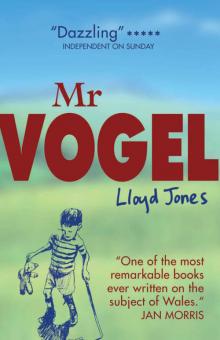 Mr Vogel
Mr Vogel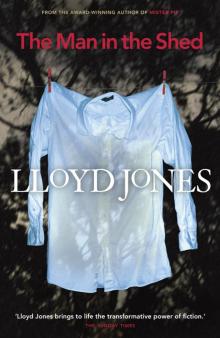 The Man in the Shed
The Man in the Shed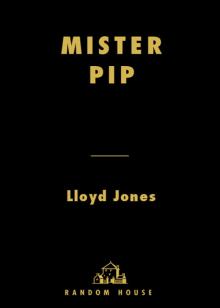 Mister Pip
Mister Pip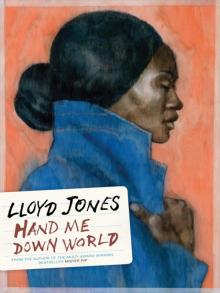 Hand Me Down World
Hand Me Down World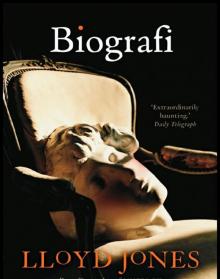 Biografi
Biografi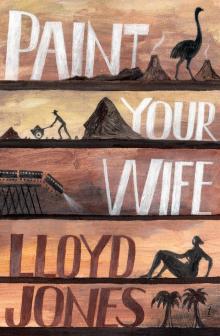 Paint Your Wife
Paint Your Wife Here at the End of the World We Learn to Dance
Here at the End of the World We Learn to Dance My First Colouring Book
My First Colouring Book Mr Cassini
Mr Cassini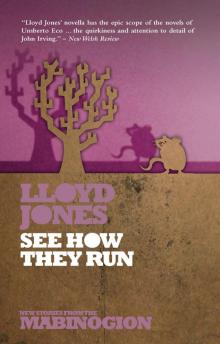 See How They Run
See How They Run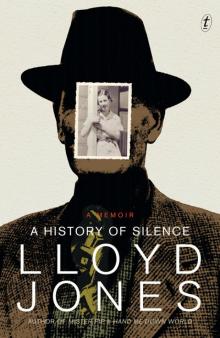 A History of Silence
A History of Silence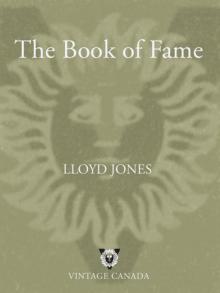 The Book of Fame
The Book of Fame